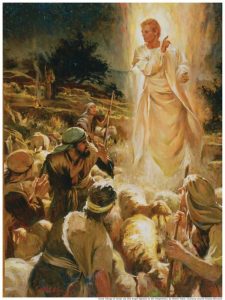 This is the significance of the swaddled baby, the manger, why ‘the shepherds’ and how they knew!!
This is the significance of the swaddled baby, the manger, why ‘the shepherds’ and how they knew!!The shepherds were in a place called the Tower of Flock (Migdal Eder) located just outside the city of Bethlehem.
Migdal Eder was the tower from which Levitical shepherds carefully watched over the lambs on the hills around Bethlehem. The shepherds’ sole purpose was to raise unblemished (paschal) lambs that would be offered as sacrifices in the Jerusalem temple a few kilometers away.
Migdal Eder is first mentioned in Genesis 35:21 in the account of Rachel’s death after giving birth to Benjamin (Jacob’s youngest son).
Micah also referred to Migdal Eder: “And you, O Tower of the flock,… to you it shall come… the kingdom of the daughter of Jerusalem.”
A manger was a crib where animals were kept.
As the sacrificial lambs were born, those Levitical shepherds in the Tower of the Flock would wrap them in birthing cloths to protect their unblemished state.
The Shepherds arrived to gaze upon a baby born in the place where Passover lambs were born, swaddled like a Passover lamb.
The swaddled lamb, to keep its unblemished state, was then placed in a manger.
The spiritual significance would not have been lost on those Levitical shepherds: Jesus’ birth pointed to Jesus as the Messiah, the paschal lamb of God who takes away the sin of the world.
God did not make the message of redemption complicated so the shepherds understood completely what the significance was!!
In Luke 2:8-12 we read:
Now there were in the same country shepherds living out in the fields, keeping watch over their flock by night. And behold, an angel of the Lord stood before them, and the glory of the Lord shone around them, and they were greatly afraid. Then the angel said to them, “Do not be afraid, for behold, I bring you good tidings of great joy which will be to all people. For there is born to you this day in the city of David a Savior, who is Christ the Lord. And this will be the sign to you: You will find a Babe wrapped in swaddling cloths, lying in a manger.”
